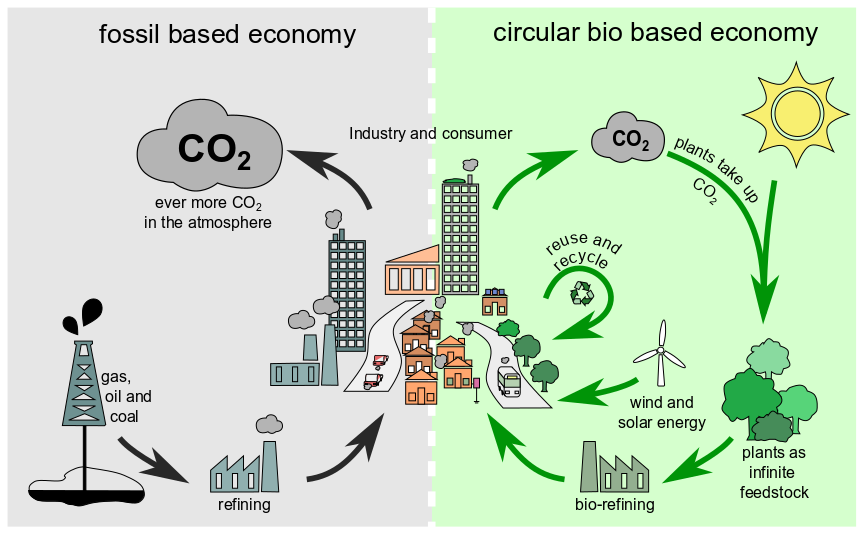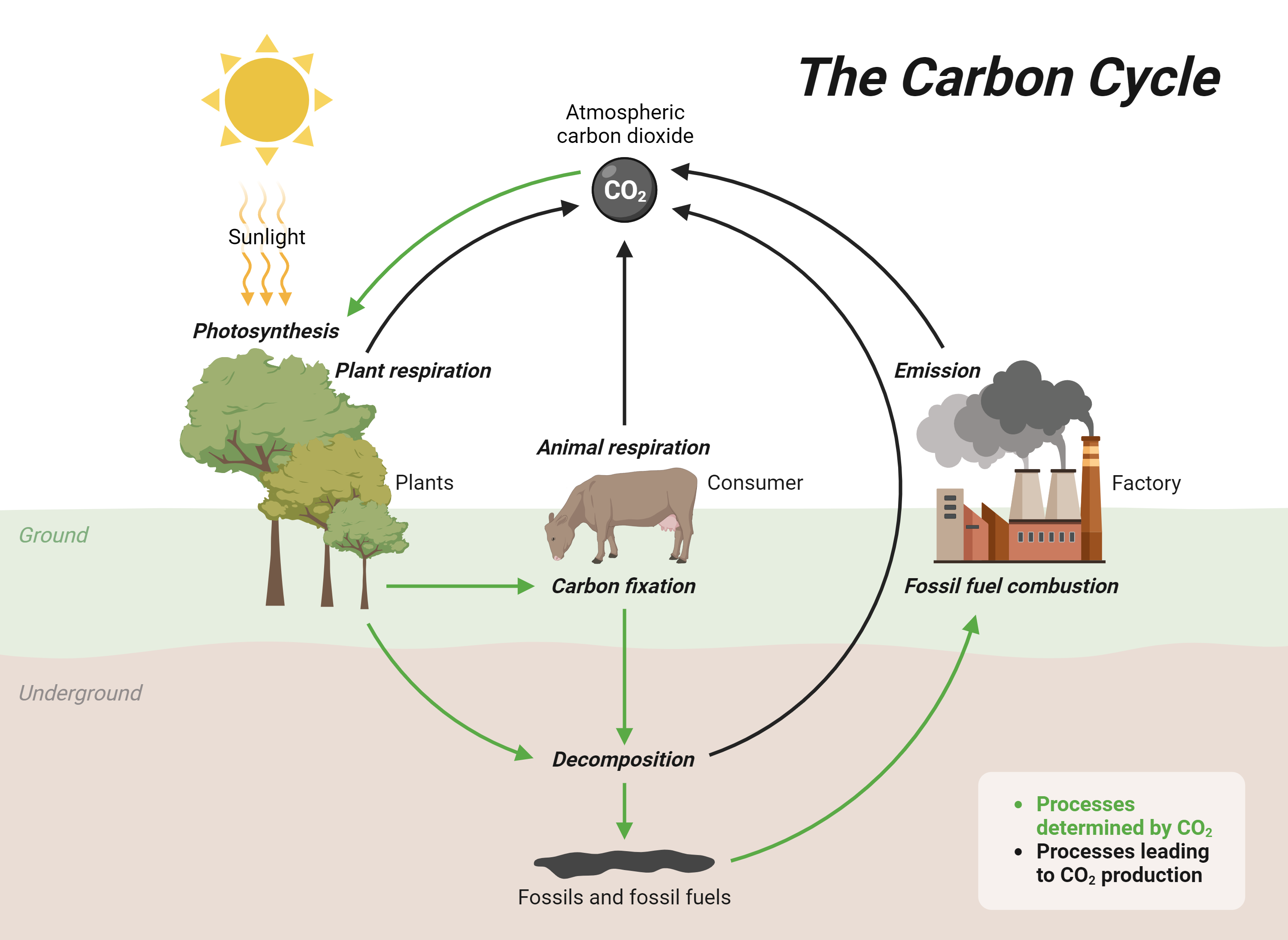Plants use sunlight and water to capture CO2 from the atmosphere to build their biomass. That biomass can then be converted to products that are nowadays made from fossil resources such as petroleum. Whereas the use of fossil resources leads to a net increase of CO2 into the atmosphere (e.g. when burning it as fuel), this is not the case when using plant biomass. For this reason, plant biomass is considered a renewable, carbon-neutral resource.

Lignin research is highly relevant for a number of applications. One example is the production of paper. In order to make paper from wood, lignin needs to be extracted from it. This extraction process involves cooking of the wood chips in strong alkaline conditions at high temperatures. Wood derived from trees that produce less lignin can be converted to paper using less chemicals and energy, which is positive for the environment.
Another example is the conversion of plant biomass into a range of products that are nowadays made from petroleum, such as fuels, plastics, detergents, etc... In this process, the cellulose is broken down into glucose units by enzymes. The glucose units are then fed to micro-organisms that ferment the glucose into products that are useful for society. Also for this application, lignin needs to be extracted from the biomass, because it prevents access of the enzymes to the cellulose. When the lignin levels are low, the conversion of plant biomass is more efficient.
A third field of interest is the improvement of the digestibility of fodder crops by ruminants. Fodder crops that produce less lignin are more easily digested by ruminants, allowing the production of more meat and milk per acreage. The production of meat has a high impact on the environment. It is therefore even much better to reduce our meat consumption such that more land can be set aside for other purposes such as afforestation and reforestation.
A fourth field of valorisation of lignin research is the production of aromatic molecules from lignin itself. Lignin can be depolymerized by catalytic reduction or pyrolysis into simple phenolic molecules that can be used as building blocks for the chemical industry. Also in this case, the use of plant biomass is a renewable alternative for the use of fossil resources.
Importantly, the plants used as feedstock for the biorefinery should be grown in a sustainable manner, in which forests and fields support biodiversity and the well-being of residents and visitors. Even though plant biomass is essentially renewable, the production of biomass-derived products has an ecological footprint and is limited by the growth speed of the plants. Therefore, also products derived from biomass should not be spilled or over-consumed.

Footnotes to the figure:
- Study of lignin in maize as for example in Eloy et al. (2017, Plant Physiology) and Lan et al. (2016, Plant Physiology) and in barley as in Daly et al. (2018, Plant Biotechnology Journal).
- Study of lignin in flax as for example in Chantreau et al. (2014, Plant Cell) and Huis et al. (2012, Plant Physiology).
- Study of lignin in poplar as for example in Vanholme et al. (2013, New Phytologist), Niculaes et al. (2014, Plant Cell), Lu et al. (2010, Plant Physiology), Dillen et al. (2009, Tree Genetics & Genomes), Marron et al. (2010, Tree Genetics & Genomes), de Lyra Soriano Saleme et al. (2017, Plant Physiology) and van Acker et al. (2017, Plant Physiology); in fir as in Laitinen et al. (2017, Plant Physiology); and in pine as in Wagner et al. (2013, Plant Molecular Biology) and Barakate et al. (2011, Plant Cell).
- Study of lignin in sugar cane as for example in Bottcher et al. (2013, Plant Physiology) and Cesarino et al. (2013, Journal of Experimental Botany).
- Fundamental study of lignin in thale cress (Arabidopsis thaliana) as a model system, as for example in Sundin et al. (2014, Plant Physiology), Oyarce et al. (2019, Nature Plants), de Vries et al. (2018, Biotechnology for Biofuels) , De Meester et al. (2018, Plant Physiology), Vanholme et al. (2010, Plant Journal), Van Acker et al. (2013, Biotechnology for Biofuels), Corneillie et al. (2019, Plant Physiology), Vanholme et al. al, (2013, Science), De Meester et al. (2018, Plant Physiology), Steenackers et al. (2017, Plant Physiology), Tsuji et al. (2015, Plant Biotechnology Journal) and Vanholme et al. (2012, Plant Cell). You can read more about sustainable biotech trees in Custers et al. (2016, Trends in Plant Science), Harfouche et al. (2012, Trends in Plant Science), Walter et al. (2010, Nature Biotechnology) and Strauss et al. (2009, Nature Biotechnology).
- Study of the influence of lignin engineering on pyrolysis as in Toraman et al. (2018, Journal of Analytical and Applied Pyrolysis and 2016, Bioresource Technology) and Vercruysse et al. (2016, Journal of Analytical and Applied Pyrolysis).
- Study of plant extracts as for example in Dima et al. (2015, Plant Cell).
- Study of different chemical treatments as in Gómez et al. (2014, BioEnergy Research).
- Study of the influence of lignin engineering on the lignin-first process as in Van den Bosch et al. (2015, Energy & Environmental Science).
- Study of the influence of lignin engineering on saccharification in Sundin et al. (2014, Plant Physiology), Oyarce et al. (2019, Nature Plants), de Vries et al. (2018, Biotechnology for Biofuels), De Meester et al. (2018, Plant Physiology), de Lyra Soriano Saleme et al. (2017, Plant Physiology), Vargas et al. (2016, Biotechnology for Biofuels) and Tsuji et al. (2015, Plant Biotechnology Journal).
- Study of the influence of lignin engineering on bioethanol production as in Littlewood (2014, Biotechnology for Biofuels) and Van Acker et al. (2014, PNAS).
- Study of the influence of lignin engineering on the material properties of the wood as in Özparpucu et al. (2017, Plant Journal).
- You can read more about the carbon-negative, sustainable bio-based economy in Vanholme et al. (2013, Frontiers in Plant Biotechnology).
